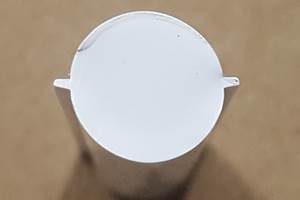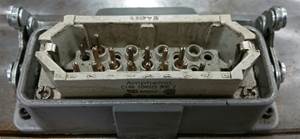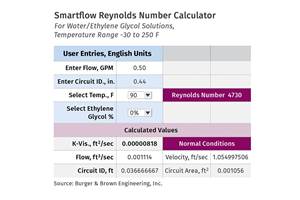Injection Molding: New Mold Trial—Will It Run 24/7?
Use this nine-step process to make sure you’ll be making good parts after a successful trial. But even then, be prepared for some hiccups.
The arrival of a new tool always generates a certain level of excitement. Often it’s late and everyone is in a rush to make “good” parts to show the client. The client may be there with you, so the pressure is on. You need to look like you know what you’re doing. You are hoping “Murphy” is asleep, because if he isn’t—well, you know by now—what can go wrong will go wrong.
The history and culture of our industry has been to pull out every trick possible to work around—not solve—any problems with the design, resin, tooling, machine, etc. Having issues with burns? No problem, just slow the injection rate. Getting flash, color streaks, blush, shrink, warp, etc.? Don’t worry, just spend hours on profiling, fixturing, trimming, changing temperatures, and other tricks of the trade to get around these problems.
If this is the way you go about things, likely you’ll have molded a few good parts to show the client, and the pressure will be off for some period. A short-term fix—but ultimately Murphy will awaken, realize he has lulled you into a false sense of security, and will look to extract his toll.
Injection molding is a thermal cycle, and some molds can take a long time to equilibrate.
You’ll often run into problems after those first few parts are made because the trial was too short. Maybe you had other tools to trial, or a production problem to solve, so you did the best you could in the time allotted. You made acceptable parts covering the basics, such as the following (each mold is unique and may have special needs):
- Ensure shorts will be ejected. Any mold will make shorts periodically and they need to be ejectable. The production hours lost due to “Crusty” the operator digging out shorts easily justifies the extra costs involved. And this does not count the tool damage done by a frustrated operator that accidentally slipped with the drywall screw, ejector pin, etc., while digging out the short shot.
- Check venting, specifically that 30% of the parting line is vented to the right depth, with the proper vent land, etc. Make sure you have no burning or gloss variations due to trapped gas.
- Confirm the mold has, on its side, clear cooling diagrams for the hook-up of all water lines with the required flow rates. Document and check flow rates and temperatures and ensure there are no restricted flow paths.
- If you are running a hot-runner mold, make sure it has a clear diagram on the hot half, showing the sprue, manifold, drops, etc. with each heater zone clearly called out.
- Perform a Scientific Molding trial to optimize fill time, pack and hold (via gate sealed or unsealed), and pressures, cooling time, screw backpressure and rotation to optimize cycle time.
- Conduct a pressure-loss study until you see the fill pattern is reasonable, there are no air traps, all cavities are reasonably balanced in filling, and the entire flow path, sprue, runner, and gate show reasonable pressure drops. (OK, a bit too perfect, but ...)
- Challenge the process with different colors and/or lots of material or 100% regrind to make sure the process still makes acceptable parts.
- Run parts until they not only look good but pass all initial quality and function tests to prove they are good.
- Document the process with plastic variables not machine setpoints. For example, document fill time—not in./sec or mm/sec injection speed. That is, you fill the part to 95% full by volume in 1.25 sec, with weight and a picture of the fill-only part (no packing). You do not document a velocity setpoint. Use whatever velocity gives you the 1.25-sec fill time. Do not set out to duplicate machine setpoints—replicate plastic conditions.
So now you have done your homework, your parts have passed inspection, and production is not scheduled for another week. So where is Murphy? He’s looming. Murphy often likes to wait until production starts before he shows up. How many times have you seen this play out? Initial parts passed your customer’s inspection and testing. Everything is fine, even as production starts. Maybe even the first production run goes off without a hitch. Then, orders ramp up and the tool is now running more frequently, perhaps on different machines. Suddenly, parts are out of specification and Crusty Sr. (he’s the lead processor) cannot bring the process back in line. What did we miss?
Once you have set the process and the cycle is optimized, start watching the entire part temperature, or thermal image of the part, as you are molding.
Injection molding is a thermal cycle, and some molds can take a long time to equilibrate. The energy going in with the hot melt and out via the cooling system(s) has to balance, and this process often takes longer than anyone likes. It is one of the reasons I dislike some aspects of just-in-time inventory control—nobody considers thermal stabilization time. Some molds take several hours to equilibrate. As they change in temperature, the parts will change as shrinkage rates change. This is especially true for high-shrink resins like PP. So how do you tell if your process is stable and will run well in production?
You must monitor part temperature via infrared (IR) thermal imaging. Once you have set the process and the cycle is optimized, start watching the entire part temperature, or thermal image of the part, as you are molding. One-spot measurement is not as effective.
Make sure you always take the IR image the same amount of time after ejection or mold open. Take an IR picture of the part or parts while they are on the robot or laid out after ejection. The sooner you get the image, the better.
Want to learn more? Visit Injection Molding Know How.
If it is a multi-cavity tool, you will be amazed at how much you can learn by looking at all the parts in one picture. Are they all the same temperature? If not, you need to investigate why.
Check out the thermal image on p. 36. The parts may look the same visually, but I guarantee you they are not all the same size, and performance will not be identical. Parts coming out of the mold at different temperatures will not be the same or function the same.
Normally, once a process starts, the mold warms as heat is transferred from the molten plastic to the steel of the mold. Water temperature may not change much (in vs. out should be less than 2° C or 4° F), but the steel temperature does change and there may be hot spots or areas that are not cooled well due to cooling line location issues. The thermal-image profile reflects what is happening in the mold steel.
Also, track the pressure or integral under the pressure curve at transfer. As a mold starts up, usually the pressure at transfer will trend up or down for a number of shots. If the mold is heating up or cooling down, it is difficult to get a reading on steel temperature, but IR camera technology allows fast and easy monitoring of the molded parts.
Bottom line: Watch part temperature and pressure at transfer for trends. Start saving parts when these process parameters stop trending. In addition, check periodically that they are within the normal range.
ABOUT THE AUTHOR: John Bozzelli is the founder of Injection Molding Solutions (Scientific Molding) in Midland, Mich., a provider of training and consulting services to injection molders, including LIMS, and other specialties. Contact john@scientificmolding.com; scientificmolding.com.
Related Content
Where and How to Vent Injection Molds: Part 3
Questioning several “rules of thumb” about venting injection molds.
Read MoreHot Runners: How to Maintain Heaters, Thermocouples, and Controls
I conclude this three-part examination of real-world problems and solutions involving hot runners by focusing on heaters, thermocouples, and controls. Part 3 of 3.
Read MoreCooling Geometry and the Reynolds Calculation
The original Turbulent Flow Rate Calculator worked well with a round circuit diameter, such as a drilled passage, but not as well using hydraulic diameters. Here’s how the problem was fixed.
Read MoreHot Runners: A View from the Bottom Up
Addressing hot-runner benefits, improvements, and everyday issues from the perspective of decades of experience with probably every brand on the market. Part 1 of 2.
Read MoreRead Next
Advanced Recycling: Beyond Pyrolysis
Consumer-product brand owners increasingly see advanced chemical recycling as a necessary complement to mechanical recycling if they are to meet ambitious goals for a circular economy in the next decade. Dozens of technology providers are developing new technologies to overcome the limitations of existing pyrolysis methods and to commercialize various alternative approaches to chemical recycling of plastics.
Read MoreUnderstanding Melting in Single-Screw Extruders
You can better visualize the melting process by “flipping” the observation point so that the barrel appears to be turning clockwise around a stationary screw.
Read MoreHow Polymer Melts in Single-Screw Extruders
Understanding how polymer melts in a single-screw extruder could help you optimize your screw design to eliminate defect-causing solid polymer fragments.
Read More
.jpg;width=70;height=70;mode=crop)





























